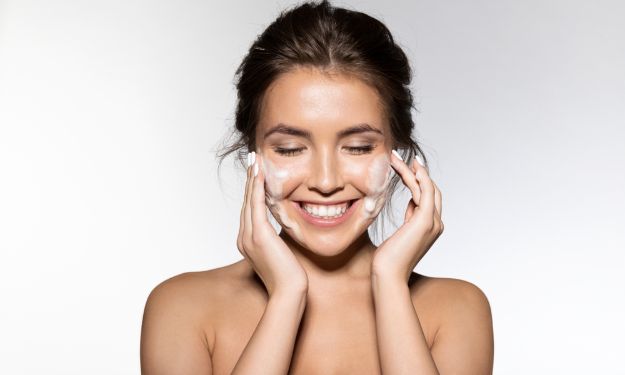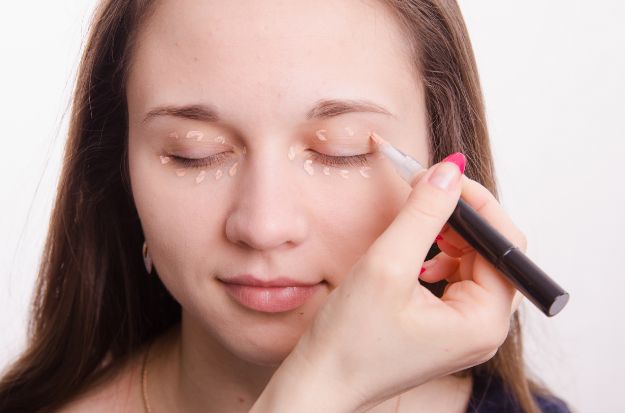Because your makeup is nothing without a strong base, here’s everything you need to know to apply all natural foundation.
MUA Tips: How to Apply All Natural Foundation Makeup
We all yearn for and strive towards having a flawless complexion. One where we could proudly step out of the house wearing only moisturizer and sunscreen and still be picture-perfect.
But hey, if you don’t have it, fake it! That’s one of the many great things about being born in this era; there’s a solution to everything, even something as small as imperfect skin. And if you have perfect skin, foundation is the answer, baby!
Here at Makeup Tutorials, we want to empower women to look, feel and be their best. And if you don’t possess that God-given flawlessness, you know that the right foundation and confidence can, more often than not, be one in the same. But because foundation can be one of the trickiest makeup products to shop for and apply, it’s crucial to learn how to put it on the right way. There’s no point in hiding your imperfections if the foundation itself is imperfect. You don’t want it to look cakey; what you’re looking for is natural-looking, refreshing makeup that you can wear every day and won’t make your skin look like a mask.
The pro of pros, Johny Saade, imparts his wisdom with us on how to get perfect skin, naturally. Watch the video below!
Ready for the step-by-step guide?
Find the Perfect Match
When choosing the perfect foundation, be sure to choose the right color and formula for your skin type.
Pros suggest that when looking for the perfect shade, test the consistency on your hand first and then the color on your jawline to match it to your neck. Most of us try the color on our wrist, which is a huge no-no since your body is usually darker than your face and neck.
But it’s not just about the color! The foundation’s formula should also work with your skin type.
Oily? Choose an oil-free, mattifying formula like:
For dry and aging skin, choose a hydrating cream-based foundation like:
Normal skin types should look for a balanced formula that’s neither too drying nor too creamy, such as:
Prep Your Canvas

Without properly preparing your skin first, your foundation will do the opposite of even out your skin tone: it will highlight any and all imperfections. First start with a perfect canvas by cleansing and exfoliating. To do both, mix a dime-sized amount of Dermalogica Daily Microfoliant with a gentle cleanser. Treat the skin with a cotton pad and cleansing water like Bioderma Crealine H2O, which can be used as a makeup remover or as part of your skin prep routine. Some makeup artists go so far as to do a facial mask before makeup application (this is done during Fashion Week to prep the models’ skin), then they massage in their oil, serum, face cream, etc. To allow the products to fully sink into your skin, wait a few minutes between each step.
After you’ve prepped your skin, apply your moisturizer, sunscreen, or a mattifying primer if your skin is oily. It’s always best to warm the cream up with your hands then press it onto the skin. If you have oily skin, continue with your regular routine and throw in a daily facial massage to boost circulation and make the skin look brighter and better. We also recommend using a cocktail of products such as an oil-free primer like Cover FX Mattifying Primer on the T-Zone and a silicone-based one like Smashbox Photo Finish Primer for the rest of your face. Applying a matte primer on dry areas of your face will make your makeup look cakey.
Remember: Don’t apply too many layers of product and look for beauty products with SPF in them.
If your skin isn’t properly hydrated, your foundation will look cakey and dry. Be sure to moisturize with toner, a mask, moisturizer, and a serum to make your makeup last longer and look more natural.
Use the Right Tools

When applying foundation, the look you’re trying to achieve is a smooth, flawless application that blends seamlessly into the skin. Some people blend with brushes while others use their fingers. The benefits to using your fingers are that they warm the product up, can blend small amounts of foundation onto the skin to make it look seamless and natural, and saves money. However, with that said, there’s no right way to apply foundation; do what feels best.
If you do opt to use a brush, choose one with soft, synthetic bristles that were made for foundation application. The two brushes we recommend are Real Techniques Foundation Brush 1402 for details and getting into small areas, and Cover FX Liquid Foundation Brush for all-over buffing. A common mistake with foundation is to miss bits because you’re either in a rush or your brush is too large. A smaller brush will allow you to get into those tiny areas around your nose and eyes.
Do what works best for you and your foundation’s formula. If you’re using a water-based foundation, don’t use a sponge as it will soak your product up. Apply the foundation in the center of the face then blend with a rolling motion.
Choose Your Coverage
Since we’re aiming for a natural look, choose the lightest coverage your skin can handle. Young, even-toned skin can get away with sheer formulas while complexions with problem areas will need heavier coverage. Liquids tend to look the most natural and when choosing a formula, avoid anything that’s too luminous or matte.
Tip: If you overdo it (it happens!), lightly dip a big powder brush like Sonia Kashuk Large Powder Brush #1 in your moisturizer and sweep it over the skin the same way you would blend your foundation. This takes the pigmentation down a notch and adds a subtle illuminating effect.
Add Concealer & Powder to the Mix

Step Into Natural Light
Congratulations! You’ve officially got glowing, movie star skin so own and love it!
Have a tutorial you’d like to see? Let us know in the comments below, on Facebook or Twitter, and we’ll work our magic.